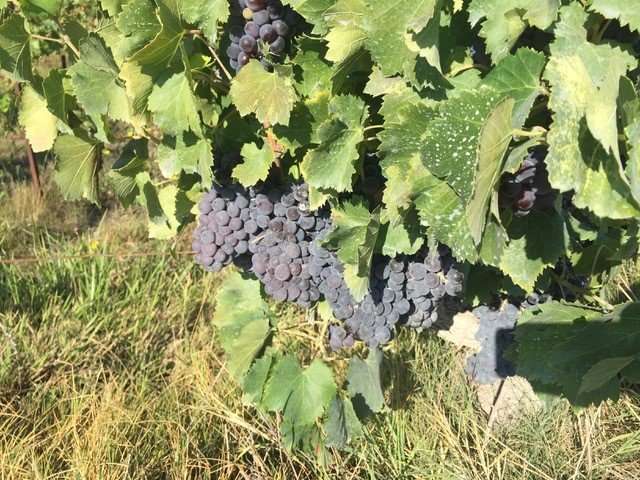"The data indicate that humans gathered grapes in the wild for centuries before cultivating them," says study co-leader Brandon Gaut, UCI professor of ecology & evolutionary biology. The research also revealed key genetic alterations during domestication that are still evident today in the fruit, such as these grenache grapes grown in Southern France. Credit: Brandon Gaut / UCI
About 22,000 years ago, as the ice sheets that consumed much of North America and Europe began retreating, humans started to consume a fruit that today brings joy to millions of wine drinkers around the world: grapes.
That's what University of California, Irvine evolutionary biologist Brandon Gaut and UC Davis plant biologist Dario Cantu believe occurred. They compared the sequenced genomes of wild and domesticated Eurasian grapes and found evidence that people may have been eating grapes as many as 15,000 years before they domesticated the fruit as an agricultural crop.
"Like most plants, grapes are typically considered to have been cultivated around 7,000 to 10,000 years ago, but our work suggests that human involvement with grapes may precede these dates," Gaut said. "The data indicate that humans gathered grapes in the wild for centuries before cultivating them. If we are right, it adds to a small but growing set of examples that humans had big effects on ecosystems prior to the onset of organized agriculture."
The study appears online in Proceedings of the National Academies of Sciences.
Today grapes are the most economically important horticultural crop in the world, but in reviewing the evolutionary data, the scientists found that populations of the fruit steadily decreased until the period of domestication, when grapes began to be grown and harvested for wine. The long decline could reflect unknown natural processes, or it may mean that humans began managing natural populations long before they were actually domesticated.
Gaut said the study data also suggest that the altering of several important genes during domestication was a key turning point for the fruit. These genes included some involved in sex determination and others related primarily to the production of sugar. These changes helped define grapes as we know them today and probably contributed to the spreading of the crop throughout the ancient world.
In addition, the researchers discovered that modern grape genomes contain more potentially harmful mutations than did the fruit's wild ancestors. These accumulate due to clonal propagation, which is reproduction by multiplication of genetically identical copies of individual plants. Grapes have been reproduced by clonal propagation for centuries, as it allows genetically identical cabernet sauvignon or chardonnay varieties, for example, to be grown around the globe. The identification of these potentially harmful mutations may prove useful to grape breeders.
More information: Yongfeng Zhou et al. Evolutionary genomics of grape (Vitis viniferassp.vinifera) domestication, Proceedings of the National Academy of Sciences (2017). DOI: 10.1073/pnas.1709257114
Journal information: Proceedings of the National Academy of Sciences
Provided by University of California, Irvine
























